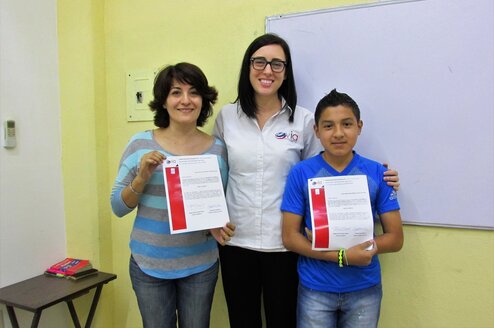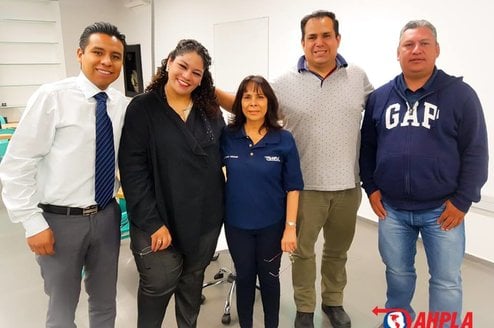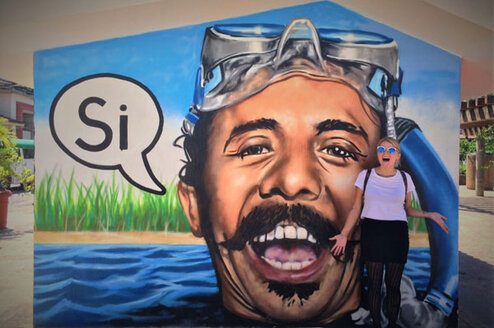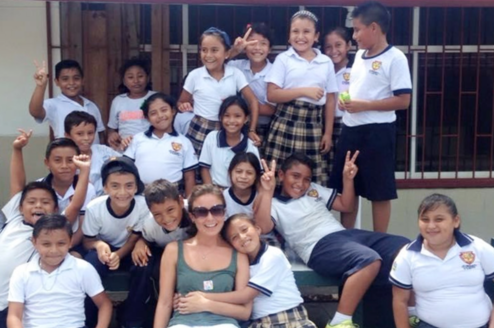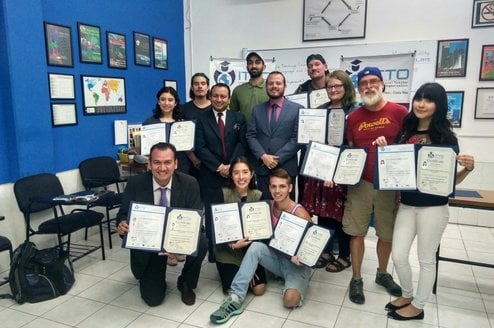Teach English in Mexico City, Mexico
Teaching Programs in Mexico City
About
Teaching in Mexico City is an awesome opportunity to explore the beauty and culture of Mexico in an inviting city with a growing demand for English. Mexico City has a variety of diverse neighborhoods with delicious food, friendly people, and great weather all year round.
With a high demand for English for people looking to better themselves in and out of their own country, it is relatively easy to find a job as a teacher if you look in the right places.
At Go Overseas, we strive to provide the most comprehensive program and job listings available. At this time, we are only able to find a few teaching opportunities in Mexico City, listed below. You can read this full guide to teaching in Mexico City, use the Search page to explore other teaching opportunities, or browse the Teaching Job Board for opportunities around the world.
In order to teach English in Mexico City, most teachers will require a bachelor’s degree and teaching certification such as TEFL. The average salary for teaching in Mexico City is $500 - $1,500 per month.
Job Types
Universities:
About 15 hours a week, with days varying. Hiring is at the beginning of every semester, which can be every few months in some universities, including summer programs. You need a Bachelor’s and a TEFL / CELTA certificate or a Master’s degree in teaching.
International Schools:
35 hours a week, Mon-Fri. Peak hiring times are July/August for the new school year and December/January for potential replacement positions. Qualifications are typically a Bachelor’s and a teaching certificate, but a mix of experience and other qualifications can get you hired. ASOMEX has a list of schools.
Language Academies:
Around 35 hours a week, but part-time work is an option. You need to have Bachelor’s and a TEFL certificate, and some places will make you take a test. There is the WAILT Organization or the Ahpla Institute which is catered more for business English, and places like Berlitz English or Harmon Hall for a variety of age groups.
Private Tutoring:
Private tutoring is easy to find all year round once you are in Mexico or already tied to a school or company. Hours can vary according to your schedule, and you can make some good extra money. However, it’s not something to rely on totally.
Volunteer Teaching:
There are a lot of volunteer opportunities to teach in Mexico City. You can get hired throughout the year and need to commit for at least a month on most programs. A lot of these programs you need to pay for yourself, but you have the option of teaching a variety of different subjects, such as art or music. Try Voluntrek.
Finding a Job
When and Where to Look for Jobs:
Mexico City is huge, and jobs can be found in almost any part. However, the popular neighborhoods in Mexico City are Chapultepec, Polanco, Santa Fe, Zona Rosa, and Xochimilco. While it might be great to work in these areas, living in some of these neighborhoods, such as Polanco, would be difficult with the Mexican salary.
Jobs can be found all year round, but if you look at the peak hiring times, you’ll have better luck then. Some jobs, such as in international schools, universities, or the bigger language academies, are easy to find online.
Also, speaking Spanish is helpful if you're looking to get hired at a smaller company or school. Since many smaller programs do not have English speakers working there, or they don’t necessarily have the means to advertise well, knowing Spanish would help expand your job search.
By having the language ability, it can allow you to get in touch with some schools you might have not otherwise known about. Jobs like private tutoring or small language academies are easier to get hired in-country.
Qualifications:
To teach in Mexico City, you need a Bachelor’s degree and a teaching certificate. Depending on the type of job, such as a private language academy, a Bachelor’s and a TEFL is enough.
International schools typically require a teaching certificate or ask you to be in the process of getting it. Having a Master’s will definitely help your chances of getting hired in a good position, such as at a university. It also can allow you to earn more at a school, even though it is not a requirement.
Need to Know
Salary & Cost of Living:
A teacher can expect to make anywhere from $500 to $1,500 a month, depending on what type of job you have and how many hours you are working, as well as your qualifications. Tutoring private lessons can get you an extra 250 pesos an hour ($20 USD), depending on the socio-economic background of the students you are working with.
Housing is often included with international schools and language academy jobs, or most schools will provide a housing allowance. There are always places available if you just walk around the city, or you can look at online classifieds like Vivanuncios.
While it is easy to find housing on one of these websites, it is safer to get your housing once you are already in the city just to be safe. Neighborhoods to avoid are Itzapalapa, Colonia Doctores, Centro, and Colonia del Valle. However, every neighborhood has safe areas and not-so safe areas that are constantly changing.
If housing is not provided, you can expect to pay around $200-$500 for an apartment. Even though there are much cheaper areas, it is better to pay a bit more to be in a safe area.
A typical meal is around 40 pesos (about $2 USD) for Mexican food, like tacos and tortas. Food is cheap in Mexico City, but not on a typical teaching salary. Be smart about where and how often you’re eating out and consider doing a lot of cooking as well as shopping at the local markets.
Classroom & Work Culture
Teachers in Mexico City have a very, very close relationship with their students. Many teachers are affectionate with their students and even are ‘friends’ with them on social media. Because this isn’t commonplace in other countries, many foreign teachers are hesitant to foster this kind of relationship with their students, and students might rebel with the lack of emotional support. Always try to have good rapport with your students.
Mexican teachers have a very specific way of dressing as a teacher. While men tend to dress more casual (wearing jeans), women sometimes wear high-heels to work. Respect is important, and most greetings in Mexico involve a hug and kiss on the cheek, especially for a colleague who you see often. It is important to greet someone every time you see them, and to ask how someone is doing before talking business.
